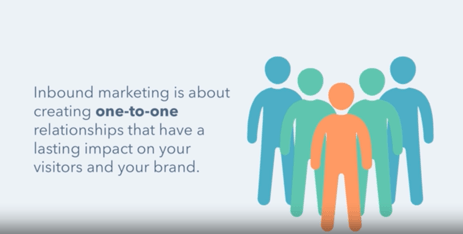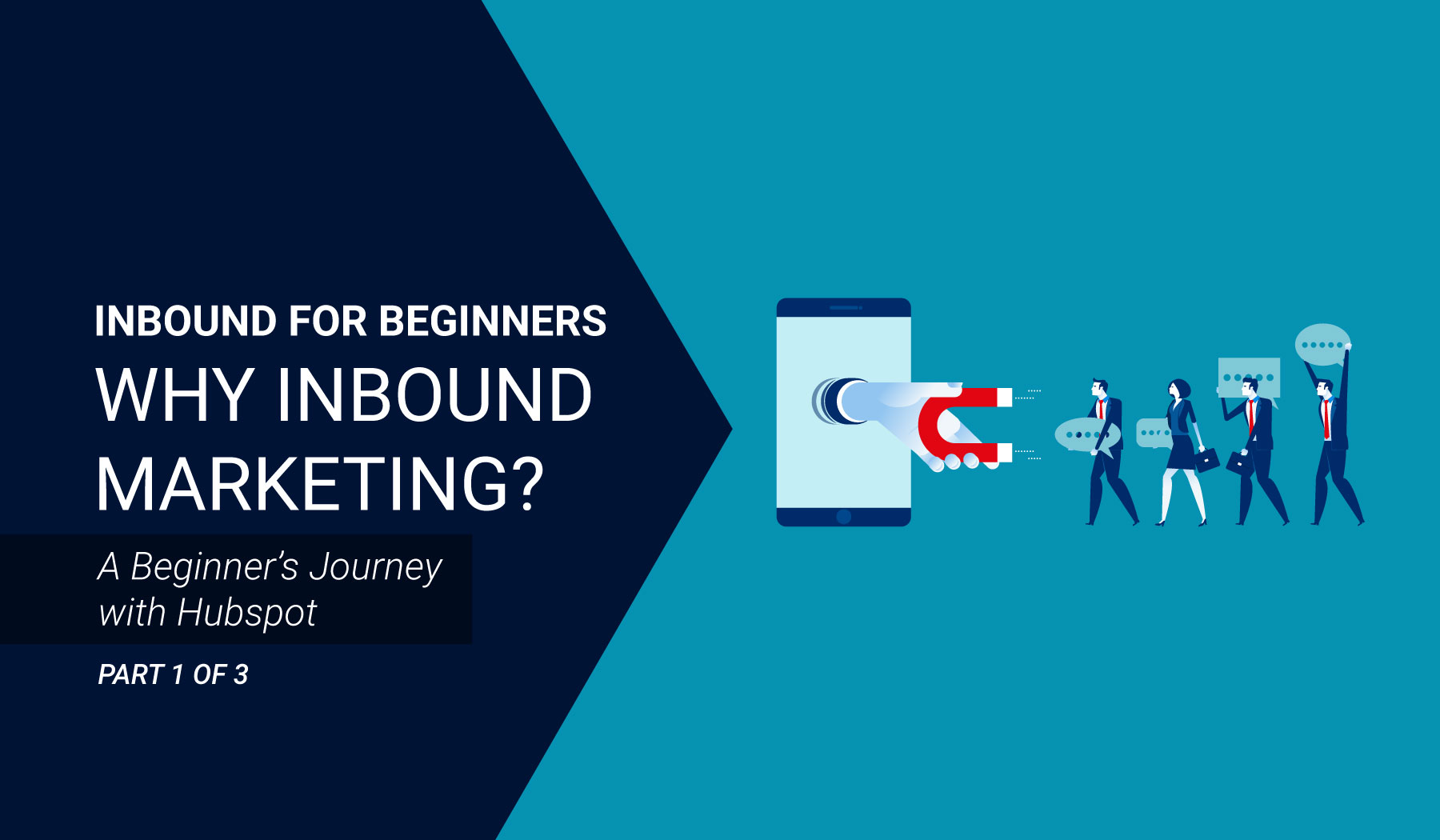
Working as an intern with Organic Endeavors, Allen gave me the freedom to work on what most interested in. After looking over the courses in HubSpot, it was obvious that marketing was perfect for me.
Why Marketing?
As a college senior majoring in communication, it’s somewhat strange that it wasn’t until a year ago that I even considered marketing as very valuable--either for a growing company or as a career. That's when COVID-19 hit us, and I saw what seemed to be a decade’s worth of marketing advancements compressed into a single year.
In a way, the virus unleashed a global “future of work” experiment on us all, and businesses everywhere had to adapt at exponential speed just to survive. With the uncertainties of COVID and lack of information given from our political leaders, people everywhere were looking to businesses they could trust. More and more interactions were forced to online platforms like Zoom and food delivery services like Grubhub as people stayed at home.
While many industries ran from these disruptions, some innovative marketing strategists embraced this as an opportunity, and as a result, those businesses actually grew during the pandemic. In one case, HubSpot conducted an analysis of its own customer data, and discovered a significant increase in ad spend once the initial shock of the pandemic was over.

HubSpot aggregated data from 103,000 customers in 2020
Similarly, a McKinsey Global Survey on executives (Digital adoption through COVID-19 and beyond) noted that in 2020 “companies have accelerated the digitization of their customers and supply-chain interactions and of their internal operations by three to four years.” It was also notable that there was a significant number of first time users of digital applications across every industry!
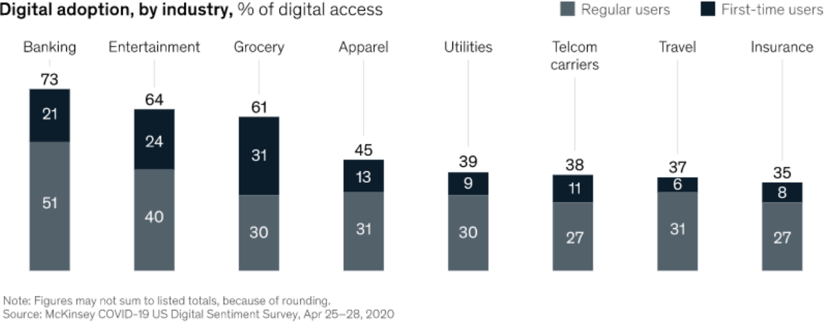
It became obvious that customers wanted personalized and accessible buying journeys during lockdown, and marketing was in a unique position to solve these problems for their businesses:
- Marketers all over the world were now expected to create a perfect balance between the art and science of aligning digital automation and human activity, while learning from the disruptions of COVID.
- Marketing technology exploded, and businesses were on the lookout for new and helpful ways to connect with their customers in a vastly different world.
- Marketing teams focused on developing a deeper understanding of their products or services and who would benefit from them during COVID.
Buyers also changed the way they interacted with businesses. Consumers were forced to look at things differently, interact differently, and purchase differently. Wherever possible, these engagements moved online and became digital relationships.
Businesses lost control of the traditional buying process, and this business challenge placed more urgency on companies to adapt to the new buyer’s journey:
- Social media platforms created a voice for buyers everywhere, and customers care more about who they are buying from rather than what they are actually buying.
- Buyers were no longer complicit in buying from brands that did not practice what they so often preached.
- More people than ever researched the companies they were buying from and made more informed decisions on who got their business.
- Personal connection was more about reading someone’s “digital body language” and finding ways to be helpful.
This led me to learn about new ways to sell, how to build trust online, how customers find the companies they want to buy from, and - most importantly - how disruptions can cause positive and personal change in real time.
Again, HubSpot noticed that there was a clear uptick in chatbot and live chat conversations using their platform, which began almost immediately when the pandemic impacted the US economy in March of 2020.

HubSpot aggregated data from 103,000 customers in 2020
So, I became curious - how could marketing technology continue to make a difference in how companies can grow during and after a disruption of this magnitude?
Of course, we know that we cannot prevent uncertainties in life from happening, so how can we face these real-world disruptions head-on with more proactive strategies? Uncertainty provides an opportunity to learn and grow, and marketing is one area that has shown time and again the power - and necessity - of adapting to consumers' needs.
This was when I decided I wanted to be part of leading this change. I wanted to work with people who were embracing the changes happening all over the world. This began my search: how could I better use marketing technology to work within this new world?
WHY INBOUND MARKETING?
One thing I noticed was that Outbound tactics weren’t as successful during the pandemic and Inbound tactics seemed to be a better way to deal with disruption. That’s because Inbound Marketing is designed to put more control in the hands of the buyer, so it’s less dependent on the company’s Outbound sales team. It’s also designed to be easily and repeatedly consumed over time, which results in a cumulative effect.
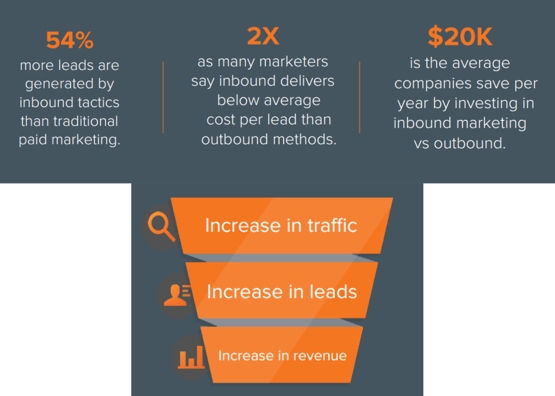
Inbound is all about engagement with the customer. Instead of cold calls and spam emails, Inbound works with potential clients, providing useful and timely information in hopes that prospects will engage with the organization and become customers.
For example, over half of companies that use HubSpot are also registered attendees of their Inbound education community, which highlights the strength of Inbound in comparison to the alternatives. These users believe in the possibilities that can come from understanding clients and building relationships with them for long-term success.
This is why I chose to focus on learning the Inbound Methodology, which I will be going into in more depth in my next article--Inbound Marketing for Beginners: Learning the Ropes with HubSpot.
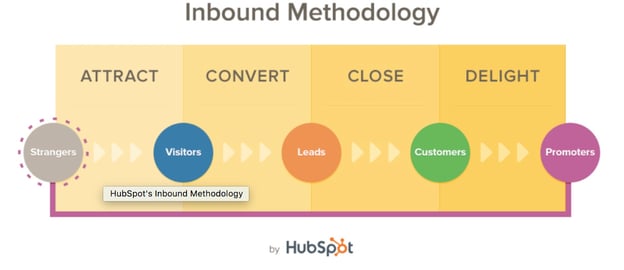
WHY HUBSPOT?
After I decided that an Inbound Marketing approach had a greater potential to effect positive change, it was clear that HubSpot was the best tool for this since they helped establish the concept of Inbound. HubSpot is a great tool to learn, even when you have little to no knowledge of CRM or marketing software.
Using Marketing Automation platforms like HubSpot can help identify these changes in life and work, and allow marketing and sales professionals to face them head on. Instead of cowering down in fear, companies like HubSpot embrace the ever-changing world that we live in today. HubSpot implements growth in every aspect of its system and even offers specific tips and training techniques that can deepen a user's understanding of many areas in their software (and even beyond).
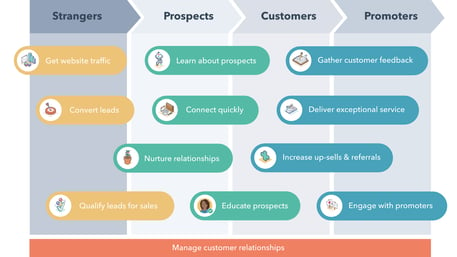
The creators of HubSpot have gone to great lengths to simplify their software and make it user-friendly for beginners, like me, to learn through hands-on activities. The initial training classes are free, and after completing the general certifications, HubSpot offers extra classes on more specific topics to increase the user’s knowledge in more advanced aspects.
HubSpot is unique in CRM software because it is all powered by a single database available to different areas of the business including marketing, sales, services and operations. HubSpot gives users the opportunity to learn about and seamlessly integrate the functions of multiple jobs within multiple departments.
When COVID hit the United States, HubSpot made some major internal improvements to help their customers continue to reach their organizational goals. Besides reducing prices and opening the training tools up to anyone (including those not subscribed to the software), HubSpot moved all of their employees to remote working, created community groups for their customers, and even implemented a new content series (adapt2020).
In HubSpot’s internal analysis, they show a clear increase in online activities against previous benchmarks at the beginning of the pandemic. As you can see, the send and open rates of marketing emails began to rise as soon as COVID started to affect the US. HubSpot was ahead of the game in predicting the shortcomings of old-school Outbound Marketing.
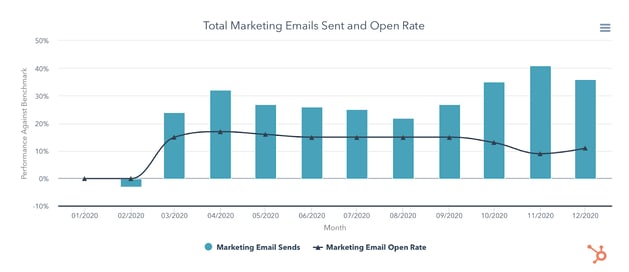
HubSpot aggregated data from 103,000 customers in 2020
So, once I decided that Inbound Marketing and HubSpot was both the approach and the system I wanted to pursue, I began looking for companies that would help me get started on this path.
WHY ORGANIC ENDEAVORS?
After deciding that the Inbound approach appealed to me more as a marketer and as a consumer, I chose to become an intern with Organic Endeavors because - not only are they a HubSpot Advanced Implementation Certified (AIC Partner - they are unique in how they approach the use of marketing technology with CRM. In fact, they have specialized in aligning Marketing with Sales by combining the industry’s leading Marketing Automation platform with one of the other best CRM platforms available today - Salesforce Sales Cloud.
This CRM-powered marketing approach is critical for service-based and midsize businesses that are looking to grow using marketing automation platforms because it achieves a more streamlined experience for both their users and their customers.
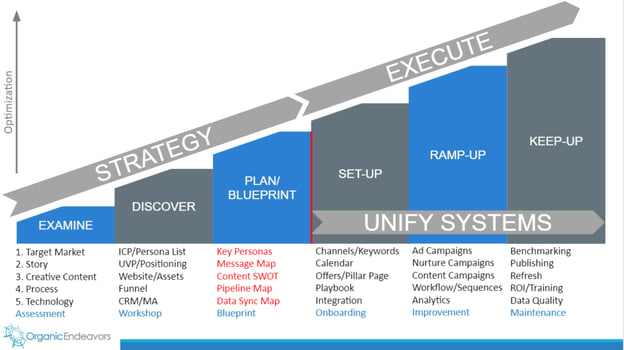
Consulting firms like Organic Endeavors work with businesses to better understand the constant market disruptions they are encountering, and use CRM software like Salesforce and HubSpot to eliminate common, daily hassles and manual effort that can disrupt the growth of a business as it scales up across multiple channels.
For example, hiring a couple of sales people and running email campaigns without really understanding the target market, or using a differentiated message across the entire customer lifecycle is going to quickly devolve into chaos - and this chaos impairs growth. I liked that Organic Endeavors applies the rigors of science and data to the problems of growth and development so Marketing and Sales can “grow better together.”
By integrating CRM data across every aspect of a buyer’s journey, a growing business can increase their awareness of changes in the market with real-time information about where they are growing or underperforming. By gaining a better understanding of how to configure and use powerful tools like HubSpot, companies are able to visualize where each lead is in the buyer’s journey, how they got there, how they can progress, and how these new customers can, in turn, bring in more leads.
So, I’m very fortunate to be working with Organic Endeavors this summer to learn more about how businesses can better execute their marketing strategies and I’m looking forward to learning even more about HubSpot.
NEXT: Join me as I begin my training and certification on Inbound Marketing in HubSpot
Recent Posts
Inbound for Beginners: Getting Hubspot Certified
Inbound Marketing is largely synonymous with HubSpot, so that's where I am going to start.
...
Inbound for Beginners: Using HubSpot the First Time
This article details how to implement the Inbound techniques we learned about previously into your...
Complete Guide for the HubSpot to SalesForce Connector Update v3.0 8/6/2018
If you are currently taking advantage of the excellent HubSpot integration with Salesforce CRM,...


